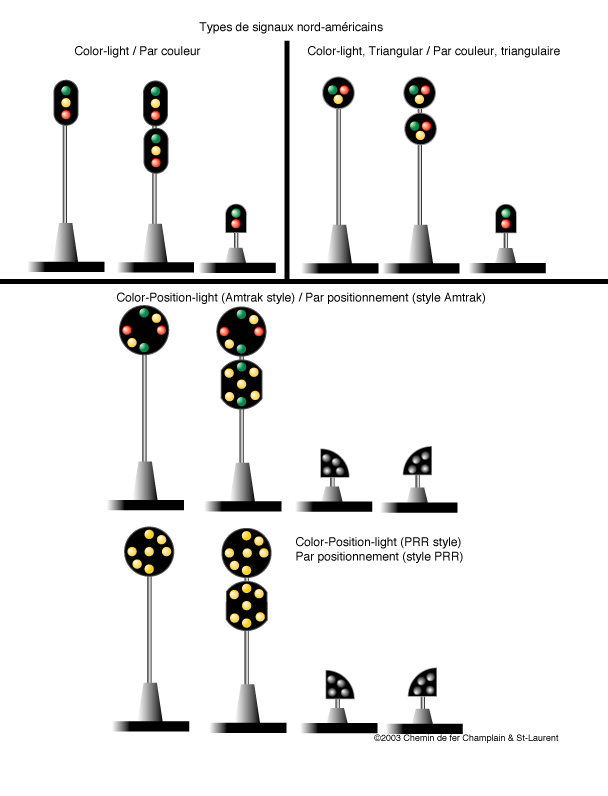|
© 2001-2004 C&StL |
Les différents types de signauxSouvent, vous entendez l'expression "un signal de type searchlight". Ce dont on parle, c'est la type de tête du signal. Ou, si vous préférez, comment sont agencé les lumières pour montrer les différents aspects. Le tableau suivant (au bas de cette page) montre les différents types de signaux utilisés en Amériques du Nord. Il existe plusieurs variantes des types représenté ci-dessous car aux États-Unis, chaque chemin de fer est libre de créer son type de signal comme bon lui semble (en autant qu'il respecte certains principes de base...). Au Canada, seuls les types "Searchlight" et "Color-light" sont permis. Les signaux sont montrés avec toutes les lumières allumées. Les lumières grises représentent une couleur appelée "blanc lunaire". Pour une description complète de la signification des aspects, voyez la Charte NORAC, la Charte des signaux au Canada et le logiciel SignaLogic. Avant de copier cette page, lisez le copyright The different types of signalYou can often hear the expression a "searchlight signal". We are speaking of the type of signal used on a railroad. "Searchlight" refer to the head of the signal, or, if you will, how the lights are actually placed on the signal to display the aspects to the engineer. The following drawings shows the most common type of signal used in North America. Many variant exist of those type because in the US, a railroad may desing it's how type of signal (but must adhere to strong criteria of visibility, security and ease of use). In Canada, only searchlight and color-light signal are permitted. Au Canada, seuls les types "Searchlight" et "Color-light" sont permis. The signals are shows with all lights up. Grey light are a color called "lunar white". For a complete description of aspects, see the NORAC chart, the Signal chart of Canada and the training software SignaLogic. Before copying this page, read the copyright 
|